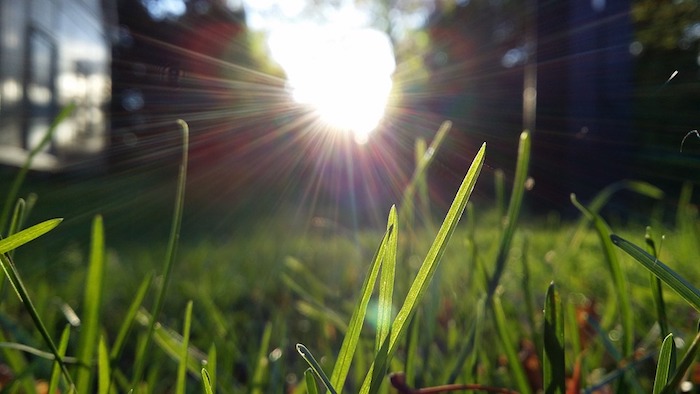
People often look at lawns and think that all that green stuff is the same, but it’s not! There are several different types of grass that could be growing in your lawn, and each kind of grass should be cared for differently. If you don’t know what kind of grass you currently have, then it’s time to find out!

Why It’s Important
You may be wondering at this point why on earth it matters what kind of grass you have, but it makes a difference. If your goal is to grow a healthy and vibrant lawn, then you need to know what kind of grass you have so you can care for it appropriately. Different types of grasses need different kinds of fertilizers, pest control, and mowing heights. If you don’t know what type of grass in growing on your lawn, then you could use the wrong treatment and end up with a big brown patch of ugly. Let’s avoid that fate, shall we?
What Climate Do You Live In?
The grass on your lawn was probably planted and it may not be a grass native to your area. You can assume as a general rule that the grasses growing on your lawn are connected to your local climate. According to the United States National Arboretum, there are two main types of grasses:
- Warm-season grasses – These do best in temperatures between 80 and 95 degrees Fahrenheit.
- Cool-season grasses – These do best in temperatures between 65 and 75 degrees Fahrenheit.
Of course, it’s all a little more complicated that just cool and warm – there are many subtle climate levels, such as:
- Cool humid zone – This area covers the northern Midwest, northeastern U.S., and Pacific Northwest. It’s best for ryegrasses, bentgrass, fescues, and bluegrass.
- Cool arid zone – This is a drier area, covering some of the Midwest as well as many western states. It’s best for Canada bluegrass, wheatgrass, and buffalograss.
- Warm humid zone – This area includes parts of the southeastern U.S. The best grasses to grow here are zoysiagrass, bahiagrass, St. Augustinegrass, and Bermudagrass.
- Warm arid zone – This zone covers most of the southwestern part of the country. It’s best for buffalograss and bermudagrass.
Those are the four major zones, but there is also a transition zone to take into account that covers mid-central and eastern central parts of the states. In this zone, it can be very difficult to find a grass that is well adapted to this area, but any grass mentioned can potentially grow there. To figure out which zone you live in, check out this map.
Identifying Traits
Now it’s time to put on your detective cap and discover what kind of grass you may have growing in your yard. To do this, you will want to look at a few identifying factors, including:
- Young grass leaves – Look at the young grass sprouting up. The leaves shouldn’t have expanded yet and you can see the growing up from the center of the shoot. The leaves will either be folded or rolled in the bud, which helps you determine which kind of grass it is.
- How the grass grows – Is the grass growing together or creeping apart? Some grasses grow close together while others don’t.
- Check out the whole grass plant – There are several things to pay attention to here. You want to look at the crown, the sheath, the blade, the ligule, the collar, the auricles, the leaf tip, and the seedhead. Here’s an online turf tool to help!
What’s Next?
These tools should get you on the road to discovering the type of grass you have in your lawn. Many lawns have a mixture of different grasses in them, so you may need to call in the big guns at Lawn Love to help you identify what grasses you have growing, so you can care for them effectively and create the lawn you’ve always wanted!